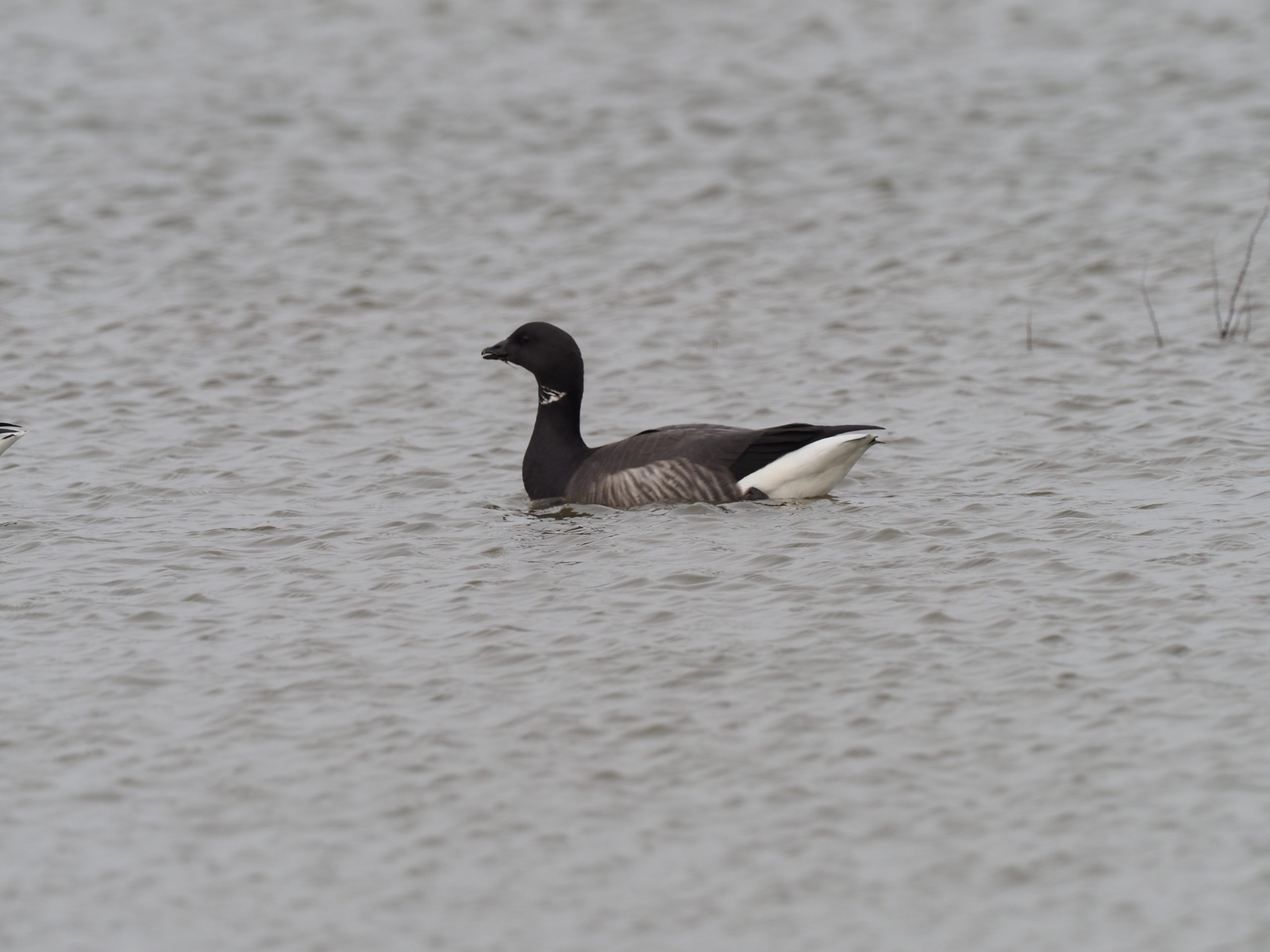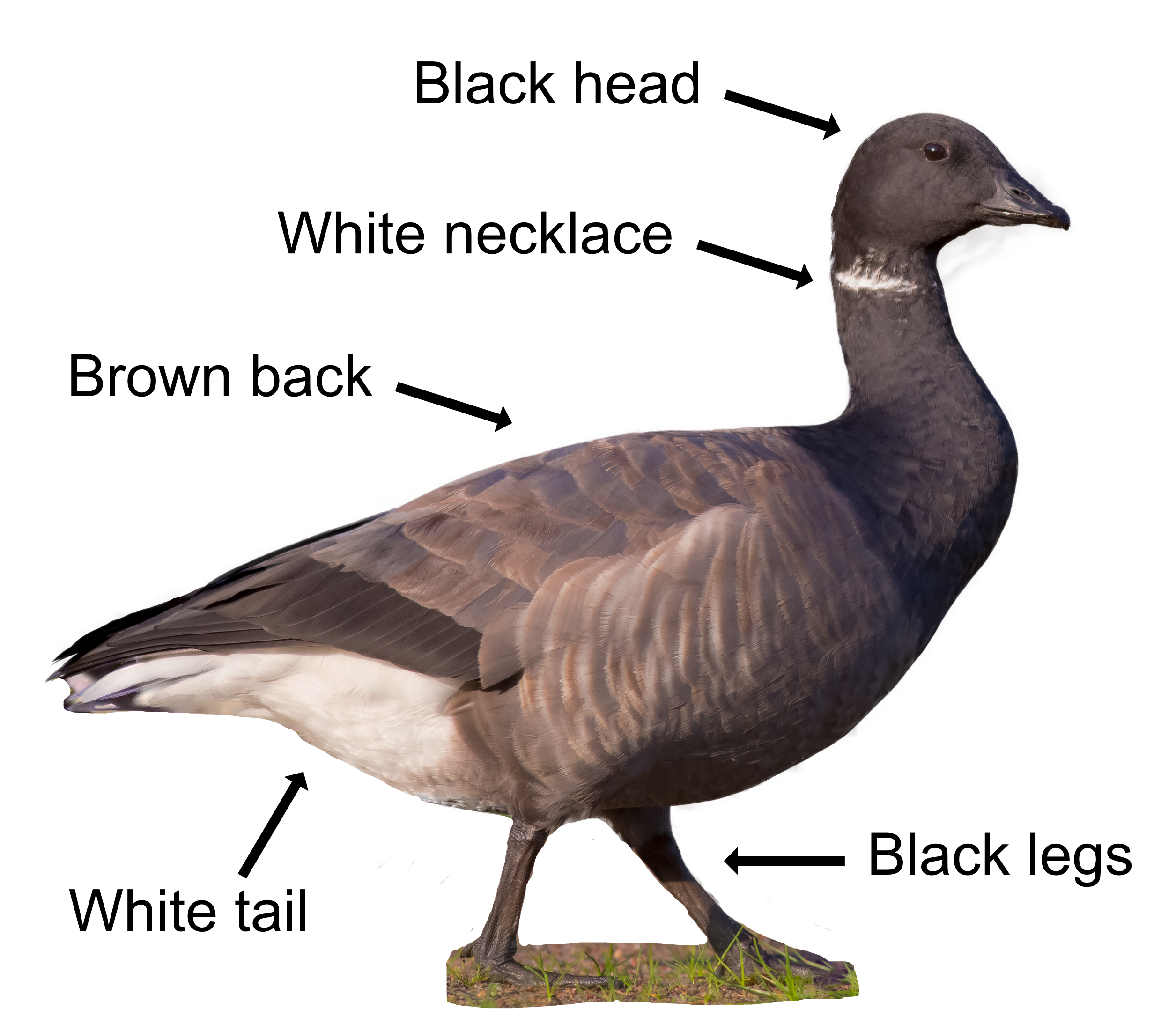
The Brent Goose is a winter visiting goose, having spent a brief summer break breeding in the artic. They leave the arctic in September to arrive here in October before leaving for the artic again in March. It is our smallest goose, though very elegant in its black finery.
The Brent Goose has a small black head with a white patch on the side of the neck, like a tiny necklace. A dark brown body, dark belly, black legs, and a black bill. A bit of a goth goose. The underparts are variable, but under the tail is always white. The wings look pointed in flight, and they fly in lines rather than the more traditional goose V-formation. Goths like to be different. Their call is a ""warunk" which is made mostly when landing or taking off - to show how tricky it is. There are two types of Brent Goose; the 'dark bellied' where their underparts are almost as dark as their upperparts and the 'pale bellied' where their underparts are a lighter grey-brown. The Brent Goose is flightless for 3 weeks during July to August while it is moulting.
Brent Geese are veggies, eating plants on land and in water, especially eel grass. They feed at winter feeding grounds on estuaries or the seacoast where eel grass, seaweed and sea lettuce is abundant.

The Brent Goose breeds in the Arctic tundra. Breeding must take place within a 100 days before the Arctic snow and ice return. Nesting often starts before all the snow has melted. Bad weather or the early onset of winter has a big impact on their breeding success. The 'dark bellied' breed in Arctic Siberia whereas the 'light bellied' prefer Artic Greenland. Although the Arctic summer is short, food for the geese is plentiful while they are there. They nest in loose colonies on flat tundra areas near ponds and lakes or on islands. The nest is a shallow depression lined with plant material and goose down. Egg laying usually occurs in mid-June. Mum incubates the 3 to 5 eggs for 24-26 days while the male stands guard as Polar Bears, Arctic Foxes, Glaucous Gulls and Arctic Skuas can all take the eggs or chicks. The chicks abandon the nest soon after they have hatched and can fly six weeks later. They stay together as a family group until the following year.
A Brent Goose can live for 19 years or more. About 100,000 overwinter here, nearly half of the world's population. Loss of eel grass marshes in the 1930s led to a decline in their numbers, but restoration of marshland has helped them recover.
Their Latin name is 'branta bernicla' where 'branta' is the Latinised form of Old Norse 'brandgas' meaning 'burnt (black) goose' and 'bernicla' is the medieval Latin name for a barnacle as people in medieval times though they came from barnacles as they didn't understand where they went in the summer. An important medieval man called John Gerard even claimed to have seen the birds emerging from their shells. The legend persisted until the end of the 18th century. In County Kerry, until relatively recently, Catholics could eat a Brent Goose on a Friday because it counted as fish, so was allowed.